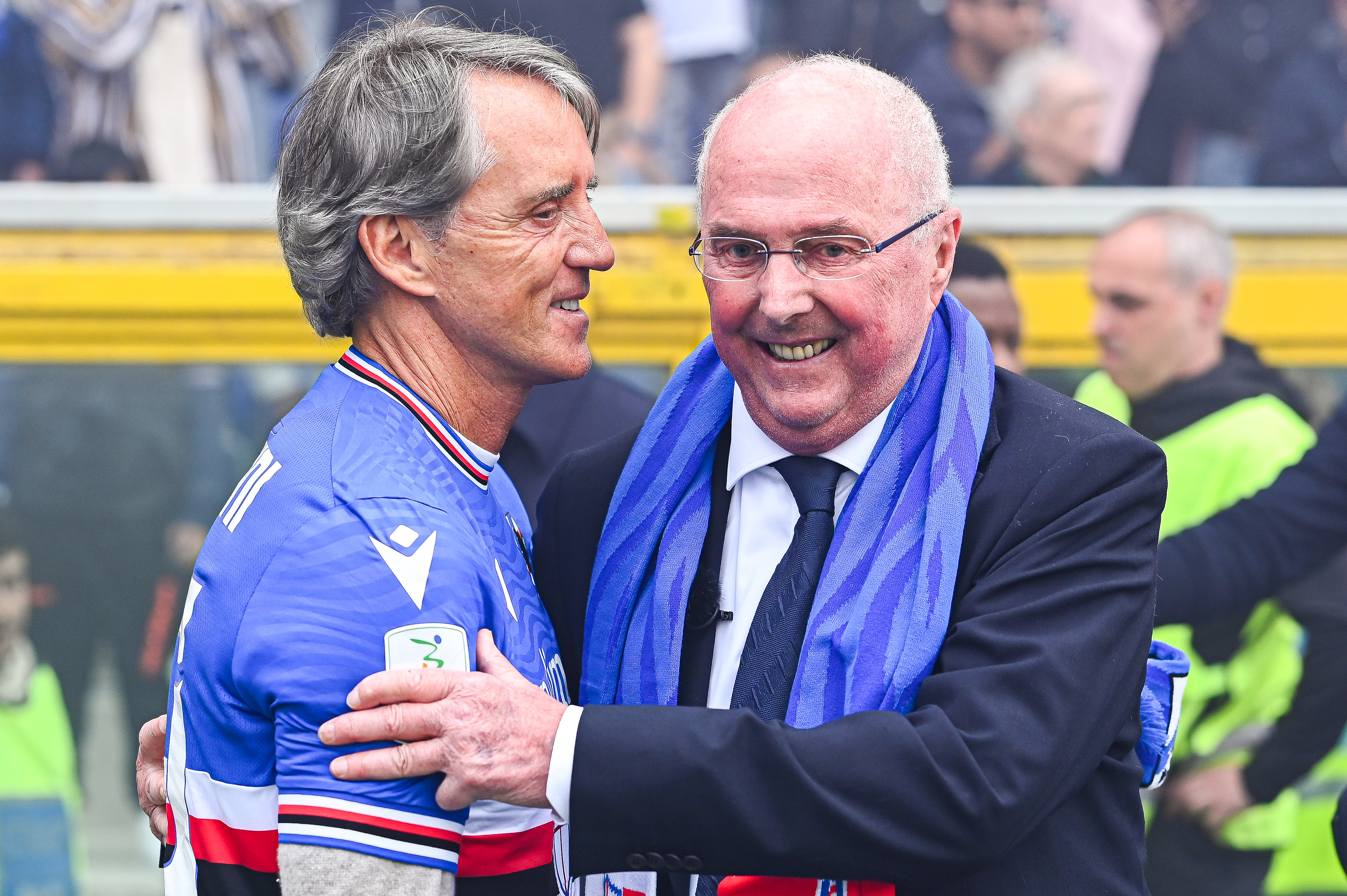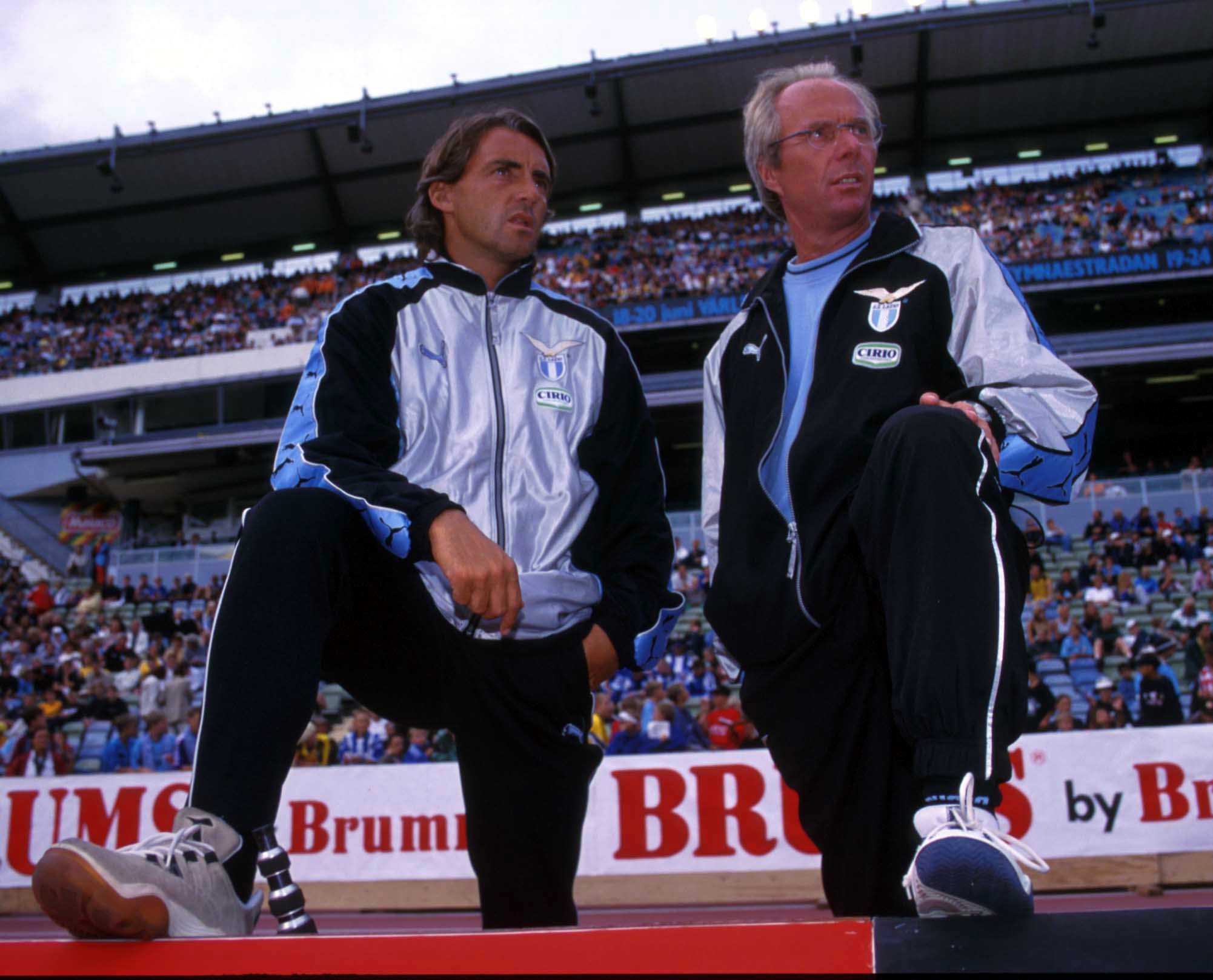
Sven-Göran Eriksson: The Mercurial Swede Who Conquered Serie A
By Dan Cancian
Legend has it that Sven-Göran Eriksson fell in love with Rome from the backseat of a cab in January 1983.
The former England manager, who died of pancreatic cancer aged 76 on Monday, travelled to Italy to scout the Giallorossi after they were drawn against his Benfica side in the quarter-finals of the UEFA Cup.
A short drive through the streets of the Eternal City was enough to light up the flame for Eriksson.
“I fell in love with Rome on the way from the airport to the city centre,” he recalled years later in an interview with La Gazzetta dello Sport.
“It was all very sudden. And when I walked out at the Stadio Olimpico, I told myself that one day I would be working here.”
The day came sooner than Eriksson could have imagined, as he replaced his compatriot Nils Liedholm just over a year later.
By then, both Eriksson and Roma had suffered European heartbreak.
In 1983, Benfica beat the Giallorossi 3-2 on aggregate in the quarter-finals, but lost the UEFA Cup final 2-1 on aggregate against Anderlecht.
The following season, meanwhile, Roma lost the European Cup on penalties against Liverpool in front of their own fans.
The impact lingered on long after Eriksson arrived at the Olimpico.
“It was difficult to motivate the players following that final,” he told The Guardian two years ago.
“Many of them had won everything with the club and there was a loss of hunger. In the first six months I wondered if I’d made the right choice.”
There was a strange circularity about Eriksson taking charge of Roma following their heartbreak against Liverpool, the side his father still supports and his first introduction to football during his childhood in Sweden.
Eriksson retired from football at 27 and soon realised he could have a much bigger influence in the dugout than he ever had on the pitch, as a willing but limited full-back for Torsby, Sifhälla and KB Karlskoga in the lower tiers of Swedish football.
By the time he arrived at the Olimpico, he’d already lifted the UEFA Cup, the Swedish league title and two Swedish Cups with IFK Goteborg and two league titles and the Portuguese Cup with Benfica.
Success proved more elusive in Serie A, then by some distance the greatest league in the world. In his first season in charge, Roma finished seventh, nine points behind champions Verona.
Eriksson’s debut campaign was hamstrung by injuries to Roberto Falcao, his star player.
“He only played seven or eight games that season. He had a knee problem and the rest of the team looked to him as the leader. They told me: ‘Mister, we cannot play without Falcao.’
“And when he did play, you could see the difference.”
The Brazilian was gone in the summer and Roma nearly won the title in the first season without him, chasing down Juventus before the wheels fell off on the home straight.
The Bianconeri had been five points clear with six games to go, a chasm in the two points-per-win era, but were trounced 3-0 at the Olimpico as Roma closed the gap to three points with five matches to play.
Three weeks later, the Giallorossi were level on points and had all the momentum, only for defeats at home against Lecce and away against Como sealed their fate.
The disappointment of missing out on the Scudetto was partially allayed by lifting the Coppa Italia, with Roma beating Sampdoria 3-2 on aggregate.
Why Sven almost never joined Sampdoria

Eight years later, Eriksson would lift the same trophy with the Blucerchiati, hitherto the club’s last trophy.
The Swede had left Italy in 1989 and returned to Benfica, winning one more league title and losing a European Cup final against Arrigo Sacchi’s AC Milan.
The Serie A Eriksson returned to was a very different environment from the one he had encountered on his first Italian sojourn.
Juventus, Inter Milan, AC Milan and Roma had all won the Scudetto in the six seasons that preceded Eriksson’s arrival at Roma, but the Bianconeri and the Rossoneri shared the next seven league titles following his return to Italy.
Had it not been for Sampdoria owner Paolo Mantovani’s honesty, Eriksson may have never managed the club at all.
The Bluecerchiati had won the Scudetto in 1991, but Mantovani felt calcio‘s descent into a duopoly was inevitable and told the Swede he could leave before he’d even arrived in Genoa.
“He had changed his mind about where the club could go after I had agreed to come. Mantovani told me Sampdoria could no longer challenge Juve, Milan or Inter financially,” Eriksson wrote in a piece for The Coaches’ Voice in 2020.
“But he told me that it wasn’t what we agreed, so if I wanted to leave, I could. But I admired his honesty, and so I accepted. We built good sides.”
Sampdoria’s good sides were invariably built around Roberto Mancini, their mercurial No 10 and a man of such influence that he “ran the club”, according to Eriksson, who later made him one of his first signings for Lazio.
“He had very high standards and demanded it from everyone. He argued all the time with referees and with his teammates,” he told The Guardian.
“But what a talent, he could do everything on the pitch.”
Coming from the Swede, that is quite the compliment. Eriksson, after all, faced Diego Armando Maradona as a manager and inherited a 20-year-old Roberto Baggio after leaving Roma for Fiorentina in the summer of 1987.
The former England manager described The Divine Ponytail as the most talented player he’s ever managed, alongside Wayne Rooney.
“Baggio had everything: incredible technique, vision, pace. I remember one of our first games away to Sacchi’s Milan,” he recalled.
“We only passed the halfway line twice and we scored twice. Baggio made one and scored the other.”
It was during his first season in charge of La Viola, that Eriksson was on the receiving end of some Maradona wizardry.
The Argentine was strangely subdued as Fiorentina beat Napoli 3-2 in the Coppa Italia, but made a point of warning the Swede the league encounter three days later would be played to a different tune. Namely, his own.
“Maradona wasn’t really interested in the Coppa Italia,” Eriksson recalled.
“He didn’t do much in the game, but after the whistle he came over to me and joked: ‘Mister, Sunday, musica differente. ’ Come Sunday, they beat us 4-0 and he was unstoppable.”
Despair and triumph with Lazio
Maradona could and often did win games – and titles – on his own, much as Ronaldo would do a decade later, when he inspired Inter Milan’s 3-0 win over Eriksson’s Lazio in the UEFA Cup final.
The Brazilian was at his majestic best in Paris, his dominance perfectly encapsulated by Inter’s third goal. Released by a through ball from Francesco Moriero, Ronaldo ghosted behind Lazio’s back four, before sitting goalkeeper Luca Marchegiani down with nonchalant ease and rolling the ball in the back of the net.
It was a brutal comedown for the Biancocelesti, who a week earlier had won the Coppa Italia after beating AC Milan 3-2 on aggregate.
It was Lazio’s first trophy since their Scudetto in 1974 and Eriksson’s first since returning to the Eternal City in the summer of 1997.
“Ronaldo could win games on his own and he was very good in his first season in Italy, but it was our lack of mentality that was the biggest problem,” he said.
“We won the Coppa Italia a few days before and Lazio had not won a trophy in more than 20 years.”
Had it not been for Lazio chairman Sergio Cragnotti’s insistence, Eriksson would have never returned to Rome to begin with.
The Swede had agreed terms with Blackburn Rovers, but was tempted by the prospect of joining Cragnotti’s free-spending revolution at the Olimpico.
Rovers eventually relented and Eriksson left Genoa for Rome, where he led Lazio to a seventh-place finish in his first campaign in charge.
Following the Coppa Italia triumph, Cragnotti embarked on the kind of spending spree that would eventually land him behind bars within a few years.
In came Christian Vieri for £21m, along with Marcelo Salas from River Plate, Sinisa Mihajlovic, Sergio Conceicao, Dejan Stankovic and Ivan de la Pena.
Lazio won a second trophy in as many seasons, beating Real Mallorca 2-1 at Villa Park to lift the last ever Cup Winners’ Cup, but the Scudetto remained frustratingly elusive.
Having chased down early pace-setters Fiorentina, Lazio moved clear at the top of the table on Valentine’s Day and were seven points clear of their closest rivals the following month.
But having been alone at the top of Serie A for 12 consecutive weeks, Lazio could only draw away against Fiorentina on the penultimate day of the season, allowing AC Milan to take a one-point lead.
The Rossoneri sealed the Scudetto the following week, winning 2-1 in Perugia to beat Lazio by a single point.
The most dramatic finale in Serie A’s history
The similarities with Roma’s collapse 13 years earlier were impossible to ignore but, to his credit, Cragnotti persevered with Eriksson.
Out went Vieri to Inter Milan for £30m, with Diego Simeone swapping Milan for Rome as part of the deal. The midfielder was joined by fellow Argentines Nestor Sensini and Juan Sebastian Veron, who had played under Eriksson at Sampdoria.
Yet for all their signings, Lazio trailed Juventus by nine points with eight games left. But, just as Eriksson’s Roma had done in 1986, they set about chasing a seemingly lost cause with gusto.
And just as Eriksson’s Roma had done in 1986, now Lazio beat Juventus to revive their slim hopes of triumph, but remained five points adrift with three games left and two behind entering the final weekend of the season.
Even in Serie A’s rich tapestry, seldom has there been a more dramatic final day than May 14, 2000. At the Olimpico, Lazio swatted Reggina aside 3-0, before an excruciating wait for news from Perugia, where Juventus just needed a point to secure the Scudetto.
The match had kicked off at the same time as Lazio’s, but was delayed by 80 minutes because of a deluge of biblical proportions.
When the rain relented enough for the match to resume, Alessandro Calori scored early in the second half to condemn Juventus to a 1-0 lead and write his name in Lazio folklore.
At the Olimpico, where fans and players had turned to the radios, it was bedlam.
“We were listening on the radio [to Perugia vs Juventus] from our dressing room,” Eriksson later wrote.
“They [Juventus] couldn’t score, so we were the champions. It was a strange way to win but a beautiful, beautiful day for every Lazio fan.

For the Swede, it was the sweetest of redemptions.
“I always thought that we could win the Scudetto,” he recalled
“We should have won it the year before, but we had failed just at the end.”
Lazio completed the domestic double by beating Inter Milan 2-1 on aggregate but, before long, the real impact of Cragnotti’s financial largesse was laid bare.
In 2001 Eriksson left Serie A for the final time to accept the England job, becoming the first foreigner to take charge of the Three Lions.
Did he consider himself a Romanista or a Laziale? “Probably both,” he told Gazzetta dello Sport in one of his final interviews.
Eriksson returned to Italy for the last time in May, receiving standing ovations at Marassi and at the Olimpico as he bid a poignant farewell to the fans and some of his ex-players.
Just over a year earlier, he’d announced he had “at best” a year to live after being diagnosed with cancer.
He dealt with illness with the same grace and dignity with which he’d carried himself throughout his career.
“I had a good life. I think we are all scared of the day when it is finished – when we die,” he said in a poignant message at the end of his new documentary ‘Sven’, which was released earlier this month on Amazon.
“But life is about death as well. You have to learn to accept it for what it is.
“I hope you will remember me as a positive guy trying to do everything he could do.
“Don’t be sorry, smile. Thank you for everything – coaches, players, the crowds. It has been fantastic. Take care of yourself and your life and live it. Bye.”
Related Articles
Related Articles
We get a local take on what's hot in Cremona - where to eat and drink, sights to see and handy hints that might not be in the tourist guides.
The Artemio Franchi will always be the main reason calcio fans head to Florence but there is one other thing that must be on the to-do list.
After the final whistle is blown at Stadio Giuseppe Sinigaglia, there is no better place to unwind than Bellagio.




